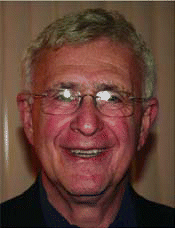In Atlanta, said Stanley M. Fineman, MD, MBA, Immediate Past President of the Joint Council of Allergy, Asthma and Immunology, and an allergist with the Atlanta Allergy and Asthma Clinic, “there is some concern among board-certified allergists that we practice immunotherapy differently from some of our ENT colleagues. From the perspective of anyone who provides similar services, there is going to at least be some perceived competition.” Another concern, said Dr. Fineman, is that patients may not understand the differences between the training of a board-certified allergist and the training of an ear, nose, and throat allergist. “To the extent that this can sometimes be confusing to patients, then that is a concern.”
Explore This Issue
August 2007Role of Communication
The benefits of one-to-one communication cannot be overemphasized, ENT leaders note.
“There has definitely been a sea change in the relationship between allergists and otolaryngologists,” confirmed M. Jennifer Derebery, MD, Clinical Professor of Otolaryngology at the Keck School of Medicine at USC, in private practice at the House Ear Clinic in Los Angeles, and Past President of the American Academy of Otolaryngology—Head and Neck Surgery and AAOA. “We’ve always respected each other, but I think that there’s a much greater understanding about the level of training each specialty has. We have much in common in how we view clinical disease, but each specialty has its own unique way of analysis as well.”
Ms. Lucas recalled a three-and-a-half-year process to hammer out RUC parameters in cooperation with the Joint Council, in which one allergist remarked, in surprise, “Wow, you’re just like us!”
“We have been ‘siloed’ in specialized medicine for a long period of time,” remarked Dr. Marple of such misperceptions. “In terms of medical information, we have separate journals, and we do not specifically interact at that level. Economically, we’re in separate buckets. Educationally, we come at this a bit differently, but at the end of the day, we’re all taking care of the same pool of patients. But when we get out into the community, we do not have the opportunity to work and communicate with one another.”
Those separations will hopefully diminish as interdisciplinary initiatives go forward into the future, said Ms. Lucas. AAOA continues its outreach through the CME Committee, headed by Dr. Marple, and the Socioeconomic Committee, currently chaired by Dr. Pillsbury. She pointed to a current work group with the Joint Council regarding the US Pharmacopoeia’s plans to change the way allergy vials can be manufactured. Incorporated into AAOA’s strategic plan is specific language regarding improvements in interdisciplinary relationships. Ms. Lucas’s advice for private practice otolaryngologists is to take steps to contact their allergy colleagues and find ways to work in a collaborative manner. “The beauty of otolaryngology,” she said, “is that it offers the surgical management option. You can use that as your entrée to define yourself and your practice, and to reassure your allergy colleagues that you are not there to take away their patients.”

Leave a Reply